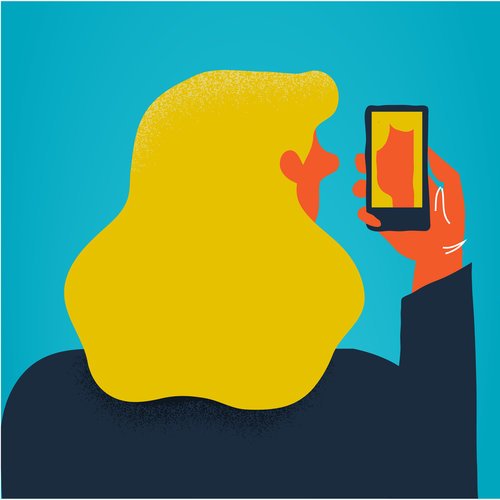Curiosity Can't Kill You: 5 Questions We'd Love to Untangle
What if you could find the answers to all of your questions? Is your curiosity endless enough to explore that far? With so many answers to so many questions, how would you want to share that newfound knowledge with others? All good questions to ponder…
Being in the business of finding the answers to consumer-based questions (big and small), we lead our clients on a journey to help meet their business goals. The topics and trajectory of our work often take us into the homes, workplaces, and lives of customers. We are comfortable exploring the needs, wants, behaviors, and beliefs of customers across a wide range of geographies, life stages, and cultures. And almost all of our work informs marketing and brand building strategy and innovation efforts. Immersed in our clients’ big questions, we don’t often stop and reflect upon the questions about which we are personally most curious. If we were given the time and resources to do so, what questions would we answer?
A curious mind goes to the big questions as well as the more immediate daily frustrations and small annoyances. Why do people circle a parking lot looking to park as close to the store as they can when that time would have covered the walk in from further out? Why do people feel they need to crowd the gate area to get onto a plane, when flying is an experience so many people complain about? What’s the rush? (These might be two sides of the same question, as I think about it). What is it about my name that the barista can’t get right?
Bigger questions include things like, how ready are people for artificial intelligence? And how is AI going to change the human work force? Or, what is the common ground between the various factions in the Middle East? Those are tougher issues to contemplate and explore but are still worthy of untangling.
Which leads to the question… What would you like to see untangled? We checked in with some of our own team to see what they would like to research and straighten up to satisfy their own curiosity, remove a frustration, or create a new and better solution. Here’s what they shared…
1. The Changing Female Consumer
Lisa Osborne, COO
I’d really like to jump into the topic of if, and in what ways, the recent women’s empowerment movement, as signified by #metoo and #timesup influences consumer behavior. As the movement and conversation continues to build momentum, how are women responding to the messages they are receiving? What is being internalized and how is that shaping their perceptions and engagement with brands, products, and marketing communications? Are women looking at the marketplace in a different way? And, if so, what is breaking through to them either negatively or positively? What is the reflection of themselves that they wish to see? Are there brands that are “woke” and offering an authentic voice while others are falling short?
We actually have scoped this out as an insights project with our friends at Collaborata, a co-funding platform for research questions. We are seeking sponsors to co-fund the research as it is applicable to a cross-section of categories and brands. The learning would be incredibly useful as brands consider future communication strategy in order to reach the “new female consumer” who is wading through the waters of gender stereotypes, agency, empowerment, and self-image. Check it out here if you want to learn more and join the untangling effort.
2. Rational Re-engagement with People Across the Aisle
Nate Depies, Vice President, Insights & Strategy
One topic I would like to better understand is how we, as a society, can re-engage with people who hold opinions that differ from our own. Our collective empathy has deteriorated. How can we rebuild our ability to connect with others, and engage in constructive dialogue to understand someone else’s point-of-view? How can we become better listeners, without being combative and without planning our rebuttal?
Over the past generation, society has become increasingly polarized. We have divided into tribes; tribes that share our opinions. We rely on news feeds that reinforce our opinions. Our personal viewpoints have narrowed. We have become dismissive, defensive, and angry rather than being open, and assuming positive intent. How can we rebuild empathy and a sense of community?
3. Decoding the New Visual Generation
Rob Volpe, CEO
There are so many topics I’ve already been able to explore that have just been fascinating – carry/conceal weapons; aging; the working class. We even led our own project looking at “Who’s Getting High?” with the rise of recreational marijuana use – were the stoner stereotypes correct? Short answer: No
There are many other marginalized groups that I’d like to explore to get to know better – what’s life like as a transgender person? What’s the experience like for our veterans coming home and attempting to re-integrate? I believe those are stories that are untold and deserve more attention.
One area I’ve explored a little already but am very curious about is how Gen Z (kids under 25, give or take) are much more visually-oriented. I call it Viz Gen. Their primary methods of communication are visual – Instagram and Snapchat. Written language is kept short – a tweet or a text. Often an emoji – another visual element – is used. As these consumers continue to enter the workforce and increase their disposable income, it’s going to have a huge impact on marketing. My sense is that marketers are unprepared for what’s coming, and I’d like to help with that.
4. Creating the Insightful Deliverables that Really Resonate and Inspire
Robin Algaze, Creative Director
The beauty of smart design is the opportunity to provide multiple answers, solutions, and possibilities to the same challenge. For this reason, I am always exploring, learning and investigating the user experience. Especially when it comes to the interaction between delivering insights and our clients.
The one thing that all research projects have in common – is the need of the end user. And, from project to project that can differ greatly. So, why do we always default to the same delivery options for the final research? Reports, charts, and outlines are the standard - but are those the best delivery method in all situations – to everyone on the team? How do you make the insights stick?
What if you dug deeper into the wants and needs of your client audience and tailored the delivery of the information? Would providing a bespoke deliverable provide an entirely new level of comprehension and absorption of all that hard work and valuable information?
Report, sure. Video, maybe better? Board game? Infographic? Interactive infographic? Bento Box? VR experience?
For a recent project, we elevated a digital brand champion profile report by partnering it with a printed consumer photo and story album. The purpose of this companion piece was to deliver a different level of connection with our client’s consumer. Rich in additional story and visual detail, this deliverable was personal, memorable – and extremely well received. The client couldn’t put it down. It stuck. I’m looking to do more of that type of innovative work that sticks.
5. Expand How We Meet and Share Knowledge
Stephanie Spencer, Storyologist
I’d like to explore the playful side of knowledge sharing. How come we remember some research project findings and not others? Why are there some projects we reference over and over again, and others we’re like, “Uh, let me think here…”? The desire to tell and retell project insights is key to successful knowledge sharing. Retreads on past or parallel research can inform current strategy. Traditional meetings do a decent job of knowledge sharing.
What if we took it a step further? Using immersive storytelling elements and taking inspiration from the art world – how about an “experiential” recommendation, a Priya Parker’s-inspired meeting/gathering, a dramatic reading of a brand champion’s narrative, a Charlie Kaufman/Adaption style moment where the research team is written into the report? Not to jump the Damien Hirst shark, but stories and art that are weird or don’t fit quite right are sometimes the most memorable.
Here are some questions we’ve already started untangling…






